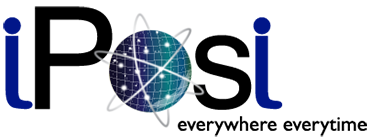Performance Presentation
iPosi’s extreme indoor GPS location, time, and power measurement performs where others cannot. Learn more
iPosi GNSS Signal Processing & Assistance
iPosi uses proprietary iP-GPS assistance, a combination of ephemeris (satellite orbit information and related clock data), signal modulation digital timing encoding, and digitally disseminated time and frequency over packet streams to each remote iPosi receiver. These form a powerful GNSS assistance stream capable of acquiring weak signals inside buildings at customer premises via standard broadband connections. Each iPosi GPS/GNSS receiver generates high “processing gain” by finely correlating incoming signals to reduce noise, interference and other signal impairments.
Indoor Base-to-Mobile Location Assistance
The Small Cell revolution in wireless will place more cells than the entire installed base of conventional cells, and almost all these new cells will be placed indoors. iPosi locates and synchronizes these cells, but the benefit does not stop there. iPosi provides an accurate reference to 3D locate most nearby mobile terminals, a capability enhanced by using WiFi as a reference location beacon.
For services such as E911 this in-place solution provides location determination where none was possible before and to virtually all mobiles transiting nearby, possibly thousands throughout the day.
iPosi time transfer augments accuracy for standards based indoor location, such as RTT (round trip delay time) over WiFi, or OTDOA that offers indoor mobile ranging signal measurements over standards based Release 9 LTE.
The Last Frontier – Accurate Indoor Location
Even outdoor GPS signals are received faintly, and are already below the level of noise within the GPS satellite transmission band. Once indoors, the mobile GPS receiver power drops by another 10-100,000 times, and experiences reflections and path impairments. Further constraining performance, mobile devices must receive at least four satellite signals at the same time to form a position fix. Even then, it takes quite some time to track the GPS signal and acquire enough information to compute a position, which often makes mobile devices unsuitable for accurate indoor positioning (where ironically most usage occurs). WiFi beacons may help or hinder depending on their degree traceable accuracy (using crowdsourcing and other techniques WiFi beacon mapping is often off 100 to 200 meters).
Ironically, outdoor cell site/tower location references provide most of today’s indoor mobile location references [1] where GPS satellite signals are obscured. The iPosi GPS solution enables reliable indoor location of mobile and fixed devices with accurate time and location information even with limited signal levels and low satellite availability. Levering the positions of iPosi embedded fixed devices including those deep indoors means that nearby mobiles can instantly and accurately use the small cell position reducing errors to less than 10 to 30 meters. Current position references in urban areas can range from 200 (67%) to 449 meters (90%) in controlled testing environments. [2]
Click the video to learn more about iPosi’s Extreme Indoor GPS Sensitivity.
[1] FCC CSRIC report, March 2013.
http://transition.fcc.gov/bureaus/pshs/advisory/csric3/CSRIC_III_WG3_Report_March_%202013_ILTestBedReport.pdf
[2] Ibid.Animation3

